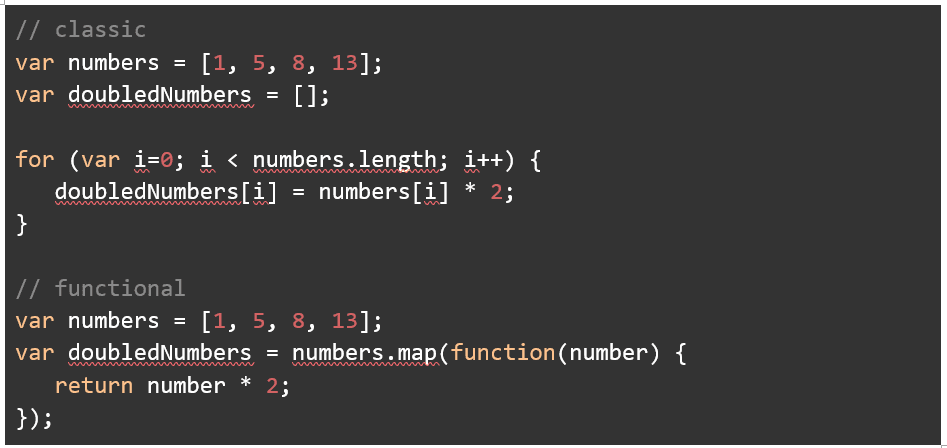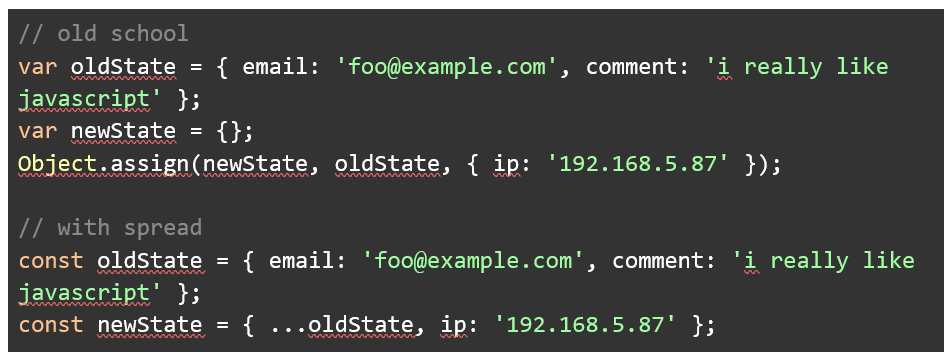
Click to learn more about author Gilad David Maayan.
The World Wide Web has grown to include more than 1.8 billion websites. Of these, about 200 million or less are active. With each passing day, thousands of new sites are added to the mix to intensify the already cutthroat competition.
2017 was a very productive year for the web with new JavaScript frameworks like Vue being published; the development of a UX based process; new programming languages; ever-increasing compatibility between browsers and extensions, etc.
Mobile browsing took over desktop usage, and responsive websites are no longer just an option. The end idea would be to make the design and performances of these mobile web pages as intuitive and engaging as possible. All this, while attempting to adapt to advancements in CSS and newer frameworks.
What was popular in web and Big Data technologies yesterday will probably not be so tomorrow. The industry of development is notorious for its unstable and evolving character. Here, we take a look at trends in 2018-19 and see how organizations are coping with the changing landscape for the data and IT professionals they employ.
JavaScript Frontend Frameworks/Libraries
JavaScript was by far the most popular web development trend of 2017-18. 2019 promises to keep this trend alive. JavaScript libraries and frameworks have evolved to become more powerful and flexible. According to a Stack Overflow report, JavaScript was not only the most popular programming language last year, but for five years running it has been in the lead.
Healthy competition exists between React and Angular, and both frameworks have their benefits and drawbacks. Angular is slightly ahead of React concerning user popularity.
Vue, created in 2014 has also been steadily rising in popularity in 2018. It has established itself as being among the most lightweight and fast frameworks. Vue finds itself in an advantageous position as it is not backed by a large tech company. Unlike Angular which is supported by Google or React, support by Facebook, VueJS was created by a single developer – Evan You.
Since documentation around VueJS has been available in Chinese right from the beginning, it has seen extremely high popularity among developers and users in China.
Today, Vue is being used by large companies like Alibaba, Nintendo, Expedia, and GitLab. Recently, VueJS was among the list of 10 most-forked GitHub projects for 2017.
Functional Programming Benefits from JavaScript Improvements
Though functional programming has been around for many years, 2019 should see an increase in its impact. Functional Programming or FP is the process of creating software based on some fundamental principles. Some such principles include composing pure functions. Mutable data shared state, and other side effects can be avoided when using FP.
The code for Functional Programming is more predictable and, perhaps easier, when compared to object-oriented code. Testing is easier as well. Developers who have been working with JavaScript for a decent period have probably come across the concepts and principles of Functional Programming. At its core, these principles encourage developers to break a program down into small functions.

2018 proved especially beneficial for Functional Programming given the improvements in JavaScript like ES6 and ES7. Some of these improvements in JavaScript that Functional Programming uses are:
Arrow Functions
These help decrease the boilerplate when writing functions. The example above can be simplified using arrow functions as shown below:

Array/Object Spread
Object spread makes it much easier to avoid mutating objects. This is largely due to the fact it is far easier to create fresh objects that can contain existing values. An example below:

Await/async
At times programs require to have call functions though they may have side effects in functional programming. There is often a need to include multiple calls that are dependent on each other.
Cross-Browser Extensions
Browser extensions have been a critical add-on for browsers like Firefox, Chrome, Safari, etc. for many years. The change in 2018 and beyond is the compatibility of browser extensions.
Browser extensions can be thought of as pieces of HTML, JavaScript or CSS code. These slightly change the way a web browser function and can add new features, change the content or appearance of a website, etc.
Earlier extensions were built keeping in mind a specific browser like Firefox or Chrome. However, with Firefox now supporting Chrome extensions and Edge starting to catch up as well, this trend is changing.
The developer manual for Mozilla offers the following explanation for their cross-browser support system:
“Extensions for Firefox are built using WebExtensions APIs, a cross-browser system for developing extensions. To a large extent, the API is compatible with the extension API supported by Google Chrome and Opera. Extensions written for these browsers will in most cases run in Firefox or Microsoft Edge with just a few changes. The API is also fully compatible with multiprocess Firefox.”
Though Firefox extensions were previously using three different systems, WebExtension APIs will be the sole method to develop Firefox extensions going forward. This would ensure that Firefox extensions will be available for other browsers as well.
If you want to test your extension’s browser compatibility, you can use this tester.
CyberSecurity, Analysis and API testing
Behind every new hack or data breach, there’s a company scrambling to put out the fire. However, your cybersecurity skills and your expertise in security testing is more valuable than ever. A new array of security tools and test frameworks have propped up in the last couple of years, and a sound knowledge on how to use these tools might help you build a successful career.
For web developers, security and testing could mean a lot of things. If you’ve already built applications with Oauth for authentication and RBAC for authorization, you’re already familiar with the latest trends in testing. Security analysis and code review is another field of security that’s hot right now. But there’s more.
Security and maintenance of dependencies – particularly open-source dependencies – is a growing concern. Some of the latest breaches were because the underlying open-source packages were not patched on time. For security enthusiasts looking for a good career, that’s good news.
Open-source components just like their proprietary counterparts are vulnerable to bugs and security exploits. There are lots of open-source vulnerability management tools out there, so you have nothing to be worries about. If you’re comfortable with auditing and analysing code, and managing security patches on your own, you should try applying for the role of security analyst or a security manager.
Moreover, ISACA, a non-profit information security advocacy group, predicts there will be a global shortage of two million cyber security professionals by 2019. That’s good news too.
Single Page Applications (SPAs)
Single Page Applications does away with the need to reload web pages when in use. They load all of their content via JavaScript. Some of the more famous examples of SPAs include Gmail, Facebook, and Github.
SPAs work within the browser and exhibit natural behavior. It is preferred by users. SPAs do not require additional waiting time directly render the web pages within the user’s browser.
JavaScript-based Single Page Applications continue to gain popularity when it comes to web development trends. The main reason being that SPAs function flawlessly across all devices with high performance and a decreased web development time.
The development of Single Page Applications is based mostly on Angular and React frameworks. SPAs can be deployed quickly on cost-effective, hybrid applications.
Progressive Web Apps (PWAs)
Progressive Web Apps were initially announced in 2015 by Google. The year 2016 saw some of the larger brands and companies rebuilding their websites with reliance on PWAs. Reports over the past few years indicated that mobile applications were fast losing their appeal because of the oversaturated market. PWAs now became an excellent and attractive alternative.
According to Google, here are some of the benefits of building a Progressive Web App:
- Presence on the Home Screen: As long as the criteria for a Progressive Web App are adhered to; Chrome prompts the user to add the WPA to their home screen.
- Reliable, Irrespective of Network Conditions: Konga was enabled by service workers to send up to 63% less data for page loads and up to 84% fewer data for completion of their first transaction.
- Increased User Engagement: eXtra Electronics was able to increase user engagement by five times with the help of web push notifications.
- Increase in Conversions: Because of better user experience, AliExpress was able to improve conversions for new users across browsers and iOS by 104% and 82% respectively.
Intelligent ChatBots
2017-18 saw a significant increase in the popularity of Artificial Intelligence-based chatbots. A well-known example is how Facebook chatbots created their language when interacting with each other. Incredible stories like this prove that we are at the cusp of new technological transformations.
Chatbots that have been developed on the bedrock of Artificial Intelligence and Neural Networks will carry on evolving and help to increase the rate of online communication.
Chatbots are already effectively addressing customer support needs, and 24*7 assistance has now become the norm thanks to these bots. The need to recruit and staff a full-time online customer service executive is fast growing a thing of the past.
Blockchain
The story of Blockchain and its influence on the web industry is already quite well known. Simply put, Blockchain is a way to collect data storage. Information is deposited on thousands of different computers worldwide instead of at a single location. The main advantage is the fact that no intermediaries exist between transactions. A sophisticated algorithm is used to verify every single operation and involves hundreds of computers across the world.
Blockchain comes with a high level of security and protection. This is one of the prime reasons why many multinational banks are currently considering whether or not to implement Blockchain in their daily transactions. Blockchain is commonly used in trading and exchange operations, security, cryptocurrency as well as other cryptography to help protect data.
Conclusion
Evolving design trends, new frameworks, developments in mobile and increasing user expectations are altering web development with each passing day. The key for positive and successful web development is to respond constructively to trends in design and the growing expectations of the user. Take, for example, Google’s Material Design which is on track to gain further popularity over the coming year.
Another example is the growing requirement to communicate and work collaboratively in real time from different locations.
Irrespective of the area of web development you are currently working on, there are exciting times for this evolving industry for the next few years.
